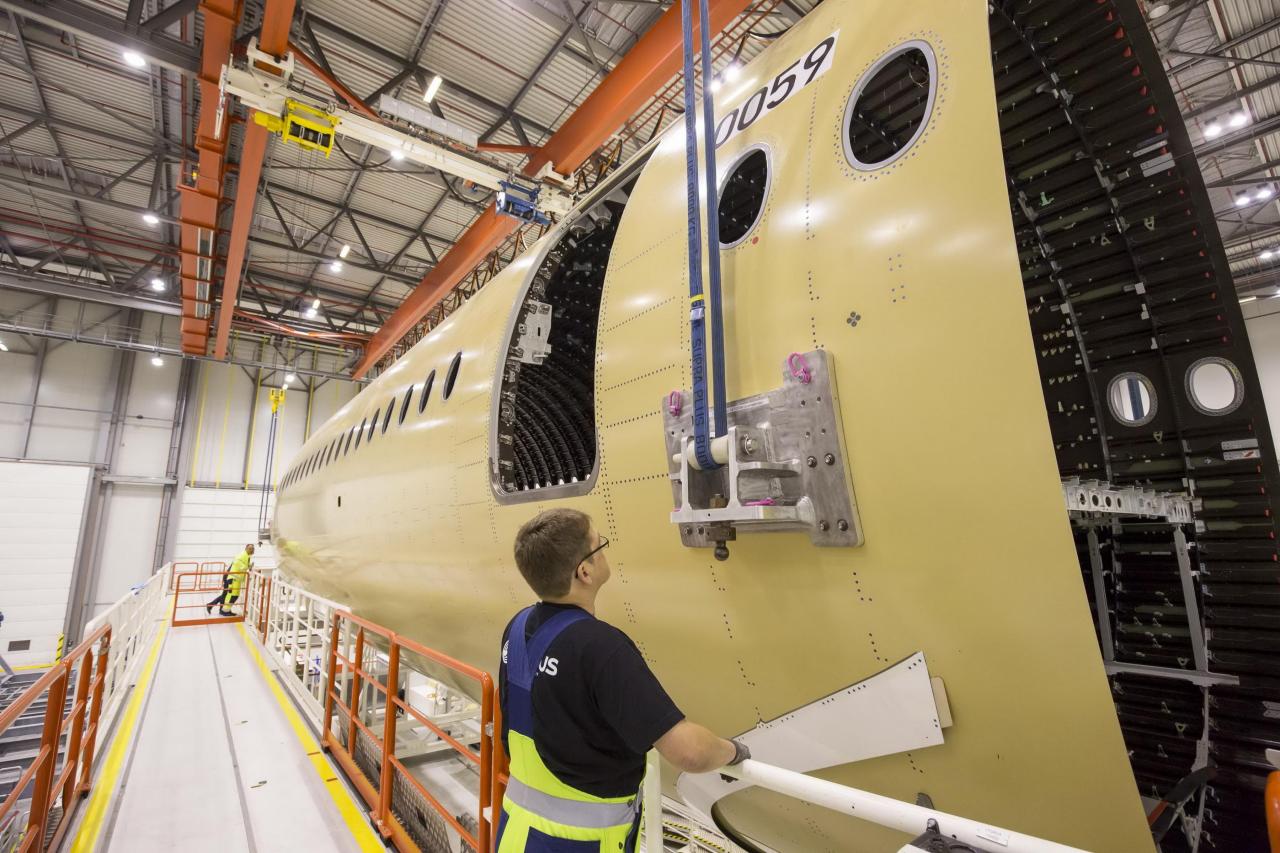December 29, 2015 Updated 12/29/2015
Email Print
James Snodgrass
Plastics News Europe

Airbus SAS Production of an Airbus 3500-XWB in Hamburg, Germany.
The recent push to cut weight has brought more composites to a variety of industries, with aerospace taking off first and fastest, and plastics moving into more uses on planes, including a first commercial use in doors.
The market for widebodied aircraft — meaning those planes that carry 300-plus passengers across oceans — has been a two-horse race for nearly 20 years, since Airbus SAS’s arch-rival, Boeing Co., swallowed up McDonnell Douglas. But while Airbus had the A330 and A340 to compete with Boeing’s 767 and 777 single-decker aircraft, it had nothing to compete with Boeing’s “jumbo” 747.
It addressed this, in the last decade, with the launch of the A380 “superjumbo”, the largest passenger jet ever made. With composite construction, the A380 could carry more people than a 747, while burning less fuel.
Boeing, however, didn’t seem to be trembling. Its spokespeople said that there was no market for “superjumbos” and that, increasingly, people were traveling direct routes rather than so-called, hub-and-spoke routes.
And at the same time, Boeing was working on its — also largely composite — replacement for the 767, the 787 Dreamliner, designed to work those direct routes. To date 1,124 787s have been ordered and 340 delivered to customers. In comparison, there have been 317 A380 orders and 173 deliveries.
Now Airbus has launched the A350 XWB (extra wide body), designed for direct routes and targeted to compete with Boeing’s 787 and 777. So far, it’s proved far more popular with airlines, with nearly 800 units ordered and 10 planes delivered to date.
With composite wings and composite fuselage frames, the A350-900 variant will typically seat 314 passengers, yet weighs just 115.7 tons, compared with the A330-300 which can seat 295 but weighs 124.5 tons. While large structural components make the greatest saving, every little bit helps.
One of those pieces is the use of PEEK used in a structural component for the first time on civilian aircraft.
Carbon fiber-reinforced PEEK 90HMF40 from United Kingdom-based materials firm Victrex has been used to replace aluminum in a fitting for the aircraft door of the A350-900. The piece, injection molded by Airbus Helicopters in Donauwörth, Germany, has received regulatory approval and entered serial production.
By substituting metal with plastic, the brackets are 40 percent lighter and 40 percent less expensive to produce. The fiber-reinforced polymer (FRP) structure of the A350 XWB’s aircraft door uses an outer skin coupled with a bracing structure on the inside. The bracket manufactured from Victrex PEEK 90HMF40 connects the outer skin to points on the internal bracing structure. The two components form a box-type structure to exploit the maximum geometrical moment of inertia.
The PEEK 90HMF40 material was specified by Airbus. It needed a material that could easily withstand the moisture that accumulates inside aircraft doors. Aluminum needs a special surface coating to prevent corrosion.
Christian Wolf, head of airplane doors research and technology at Airbus Helicopters said: “The suitable material, supplied by Victrex, as well as their expertise and collaboration with their materials experts, have contributed to the successful development and component qualification. The expertise gained from the initial use of fiber-reinforced PEEK can be transferred to other components and to other areas of application with similar requirements.”
The new material has been developed from Victrex’s 90-Series PEEK materials, which are primarily used in very thin-walled injection molded components. Victrex claims that 90HMF40 has up to 100 times longer fatigue life and up to 20 percent greater specific strength and stiffness than aluminum 7075-T6 under the same conditions.





























